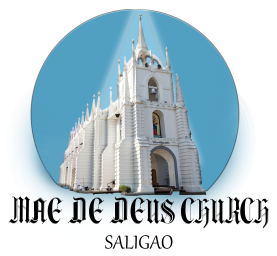Golden History
The Franciscans of old were the pioneers to come to Golden Goa as missionaries.
In the allotment of missionary areas, officially in 1555 the lot of evangelization of Bardez fell to the Franciscans. With their base at Reis Magos, Verem, they gradually ventured into Bardez.
Historically the Most Holy Trinity Church Nagao catered to Calangute, Siolim, Anjuna Oxel, Parra, Assagao and Saligao. As the strength of the faithful grew up, they gained autonomy, except for Saligao which will disembark at a later stage.
Saligao being far flung from the Mother Church, Nagao, the parishioners missed many of the spiritual benefits and graces. The Archbishop – Patriarch Dom Joao Crisistomo de Amorim Pessoa, on his visit from Nagao, visited Boa Vitoria Chapel at Pequeno Morod Saligao, in 1864 and floated an idea among the villagers of having their own church.
The villagers took the suggestion very seriously and held a meeting on 5th November 1864. Prior to this decision, the following steps towards autonomy were taken: Cemetry was build at Temba in 1838 and was blessed on 15th May 1839 and the first burial took place there in the same month. Secondly as the new Church structure gets ready, one of the Chapels existing in the village be raised temporarily to the status of the Church.
The meeting of 5th November 1864, chose Francisco Salvador Zeferino Pinto from Cotula, to spearhead the construction work. His great intelligence, political standing and later on as Mayor of Bardez was an additional shot in the arm to steer the herculean task.
The Inspector of Public Works, Major Martins was asked to design a unique plan for a Gothic Church. The plan and estimates were promptly drawn and in turn were submitted for official approval on 23rd of June, 1865. There was a unanimous decision to defray the expenses from the Communidade Coffers.
Tenders were circulated and bidders were invited but Saligaokars were all kept out of bidding. The total estimated cost was 46,920 xerafines in silver. The assembled agreed to it.
On the 7th of February, 1867, the foundation stone for the new Church was laid at Temba, Maddvona or Maddavaddo by the then Vicar General of the Archdiocese, Canon Joaquim Antonio do Rosario.
The exact location of the foundation was in the sanctuary where the main altar would be.
The raw material partly came from the only demolished Chapel of Boa Vitoria, Pequeno Morod, some laterite and granite stones from the ruins of Daujim friary and Church at Old Goa and bulk of laterite stones from a quarry lying between Saligao and Pilerne.
The Annual Budget of construction is given in break up cost in detail in the Golden Jubilee Souvenir.
Slowly but surely and steadily, the magnificent Church arose. Constant and persistent effort, hard work and sweat, result in the marvelous Gothic structure. It took 6 years, 9 months and 19 days. All the steps and thresholds leading into Church and parochial house are brought from the debris from Daujim. One cannot forget Mr. Caetano Xavier de Souza (Bendro) from Arrarim who risked his life to excavate the stones, where he contacted malaria and finally died of the same fatal disease. Therefore, would it be improper to say “through Daujim into Saligao Church”?
Saligao a most picturesque village none to compare with. The new Gothic Church added extra beauty to the village. It was an added jewel in the precious crown of Saligao. The hallowed statue is added precious pearl when the construction work completed, the Consecration of the church and Installation of the treasured Statue of Mae de Deus was officiated at by the Parish Priest of Panjim Church. Fr. Domingos Jose Rafael Pinto. On the 26th of November, 1873 the cross mark of the Consecration is on the left hand side of the sanctuary arch and Our Lady’s Statue was installed on the same side of the altar.
Fr. John D’Silva – Muddavaddi
